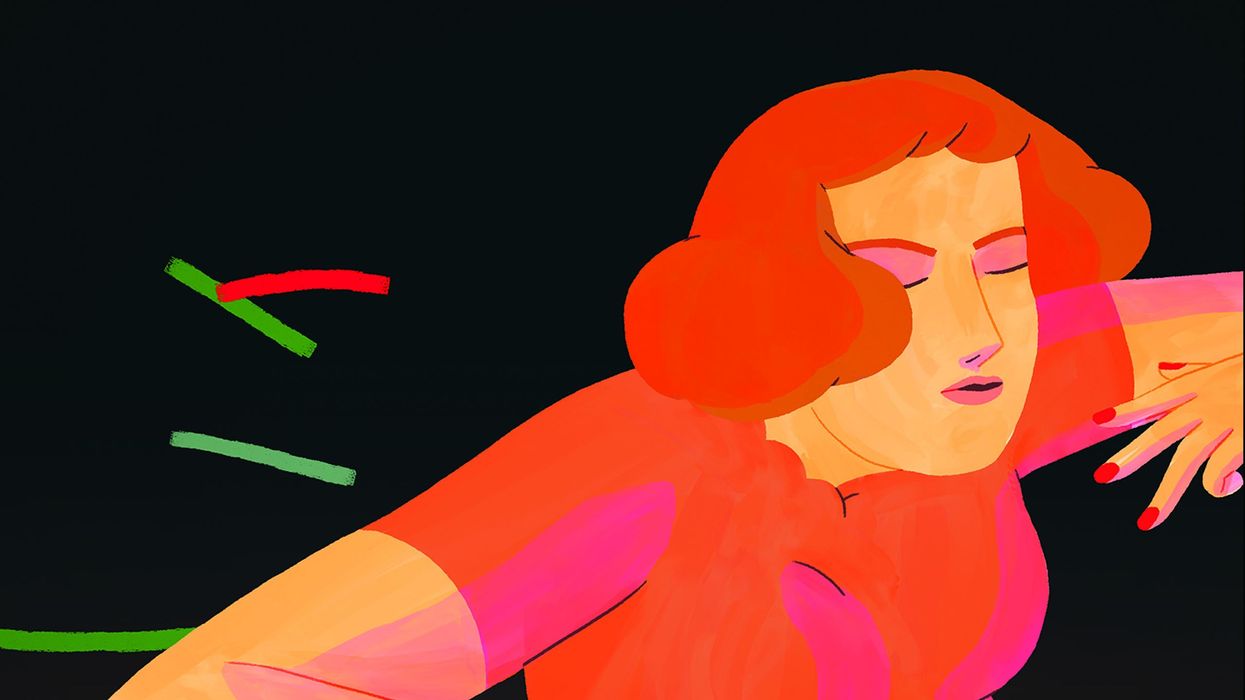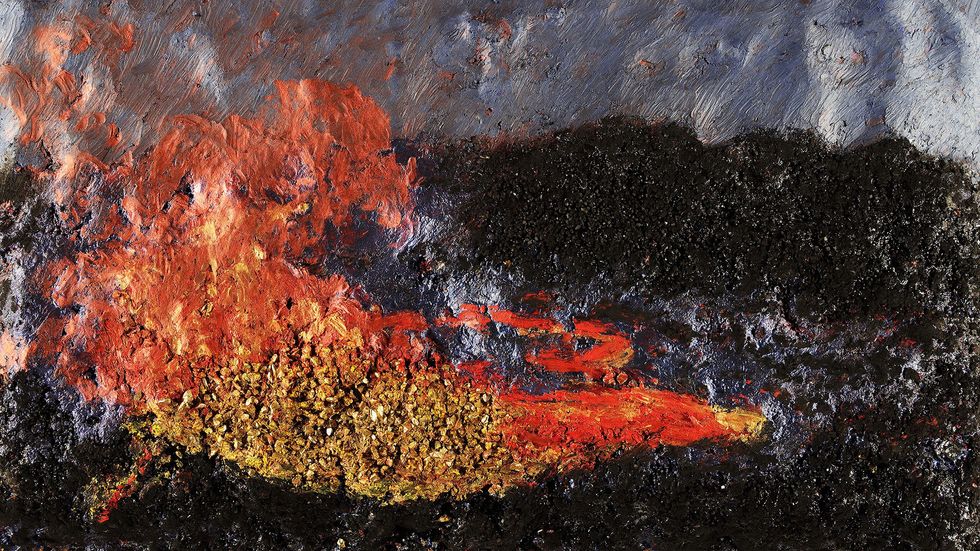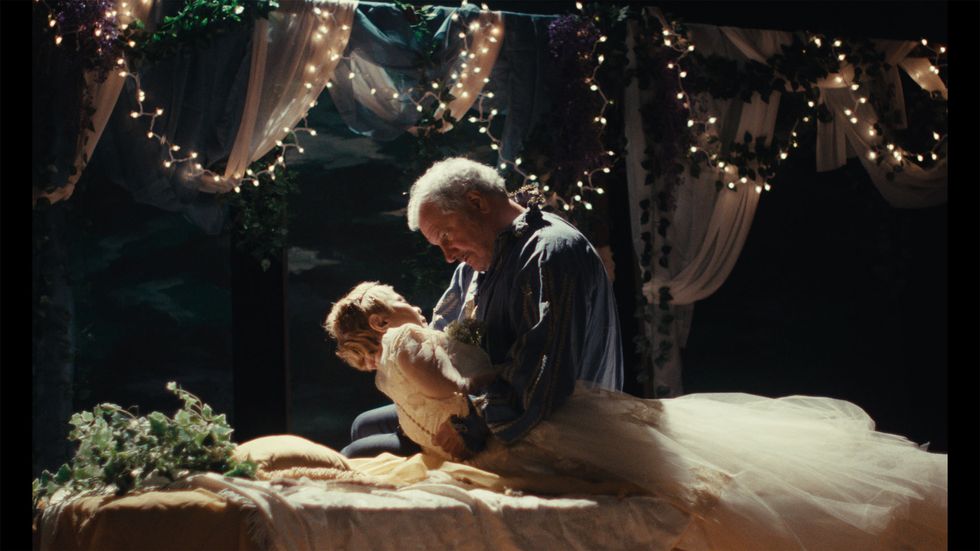The Biggest Challenges for 2024 Sundance Creators (and How They Overcame Them), Pt. 1
Creative problem-solving, tight schedules, low budgets, uncooperative animals—these filmmakers have seen it all.

27
How do you get the money shot, the big reveal, the twist that your documentary needs? How do you grapple with people telling you "no"? What happens if the ending of your short film just doesn't work, and you have to rewrite it on the spot? How do you integrate new visuals and technology to better reflect your subject matter?
What about if you get—gulp—arrested while making your film?
Believe it or not, we've got all these production trials and tribulations in the stories below, straight from Sundance filmmakers themselves. Making indie films is hard—running and gunning can be a nightmare sometimes. But as you'll see, it can all be beautiful, and worth it, in the end.
Below, you'll find filmmakers' answers to the question, "What were some specific production challenges that were unique to your project?" Enjoy!

Alisi Telengut, director/producer, Baigal Nuur - Lake Baikal
I had planned to conduct field research in the Lake Baikal region in Siberia, but my plan was interrupted by pandemic restrictions for almost two years, followed by the devastating Russia-Ukraine war. The voice interview with Marina Dorzhieva, an Indigenous Buryat woman from the Lake Baikal area, was conducted in southwest Germany, where she has been part of the Buryat diaspora for about 30 years.
Flóra Anna Buda, writer/director, 27
Definitely the coloring process. In order to reach this painting-like aesthetics I developed a coloring process that required many pages of color scripts and color codes. Each and every tiny detail had its color, textures, and shadow colors and different brushes that I made in a software called TvPaint, from a simple eyebrow to the wings of the butterfly. It was a fantastic experience to work with the amazing and very talented coloring team and to see how the film evolves.
Also it was very demanding for me as a director because at the same time I was drawing the backgrounds and supervising the animation process and putting the film together on the editing timeline so it was very complex and challenging, but for sure a great experience.
Alex Thompson, Kelly O'Sullivan, Luke Dyra, Mike S. Smith, co-director/writer, co-director/producer, DP, editor, Ghostlight
KO: there were so, so many challenges. Fitting our already tight schedule into workable hours for Katherine, who was a minor. Deciding on locations that were an hour drive away because they fit the story, limited resources, a deadline in the form of my approaching due date (I was 8 months pregnant when we filmed). I heard something on a podcast about the making of The Office that’s really stuck with me: “Everything that makes it harder makes it better.” And that was really true on this shoot. Limited hours to accommodate a minor: harder. Getting to work with Katherine: Better. A tiny crew: harder. A nimble team, working at the top of their game, who truly cared about the project and felt ownership over their work: better. Nearly all of our choices involved the “more difficult” road that ultimately made the film stronger.
AT: Beyond the normal, boring stuff (banking, financing, scheduling—all challenging), there were some unusual aspects to the shoot that we all really enjoyed navigating. For one, Kelly was eight months pregnant. That posed no limitations, but meant she was probably more tired than any of us, and we had early calls in a town an hour outside the city. Second, Kelly got COVID midway through production and was directing via walkie for a good four days, big days. Luckily her notes were still great, even confined to the airwaves.
We had about a hundred dollars a day for every location, so every line item was a favor, a beg, a borrow, or a steal. To secure our big auditorium location, Kelly, Luke Dyra, and I attended a board meeting, we thought as a formality, and ended up being asked to give a presentation on the production and how it could benefit the district’s students. We were met with extreme suspicion, because apparently there’s a Ghostlight LLC registered in Michigan... I’m still not sure why that’s suspicious. It was a movie, the characters we encountered in that room (it’s available online, still).
And after all that, we found out halfway into shooting there that the school was planning on repainting our entire set, installing Murphy tables, and had already begun tearing off the baseboards. That was a fevered negotiation, especially coming after we got a visit from the fire department for our haze (which was supplemented in VFX once we learned what the fine was for setting off the fire alarm). That location alone warrants an answer to the question.
Probably the most remarkable thing about our production was its schedule. We owned a series of locations for weeks at a time, and so the opportunity to pick up and reshoot was almost always there. Most ADs would have balked at what we did, but almost every night I’d call Alex Wilson, our 1st, and essentially tell him we were going to reshoot some piece of the day before, or an entire scene in some cases. The ability to fold in essentially two full days of pickups into our principal photography saved us immeasurably.
We lived fast. We improvised. And if it wasn’t great, because Wilson was so good, we knew we could always get it again tomorrow. On top of that, we had no wardrobe department on set, just a supervisor working remotely via AirTable, so the cast was responsible for their own costume management; and no hair and make-up, which is great for time and a bit of a pain for continuity. More than one morning was spent with me shaving Keith’s face in an off-set bathroom.
Ghostlight was the platonic ideal of an independent film, but we were also sort of doing it right, and spending where we should’ve. Our editor, Mike Smith, and his AE, Ryan Krumm, worked the entire shoot, uploading dailies every day to Frame.io; our DIT, Brandon Bunner was auditioning VFX for us as we shot; it was sometimes chaos, but nothing was chaotic. We moved quickly because we knew what we were getting was good, so our days were, on average, eight to 10 the first few weeks, then 10 to 12 at the end. For the most part, nothing fell through the cracks.
On Halloween, our wrap day, Mike Smith texted Kelly and me asking about scene 101, which is the first scene of the performance. He assumed we’d cut it, or maybe hoped we had. We just hadn’t shot it. Camera hadn’t been entirely checked in yet, so we grabbed it, four actors including Katherine who badly wanted to go out trick-or-treating, Luke, Brandon (DIT), Austin (sound), and Ian Keiser as hands and essentially told the school we’d left some things in the auditorium, could we come look for them? We had already returned all of the costumes and props, but I drove up to Waukegan and re-raided the basement at Three Brothers Theatre; so scene 101 contains looks that don’t exist in the rest of the movie. We shot with no movie lights and Luke pulled his own focus. I love the scene.
And Katherine got to trick-or-treating. She was Dorothy from The Wizard of Oz.

Alexandra Qin, director/writer/producer, Thirstygirl
Thirstygirl is a road movie so we had to shoot a number of driving scenes. Due to budget constraints, we did not have any police escort or permits for these scenes, so we had to be very stealthy and extra safe.
Somewhat related, due to some tech malfunction, we actually lost the sound for our final driving scene, which is also the final scene of the film. It was our last day of shooting, and the sun had already set so there was no way to re-shoot. And our actresses live on opposite sides of the country so ADRing the scene would have been very challenging and/or costly. Thankfully, our sound recordist and editor came up with a really great solution. They took the actresses into the car while we were setting up the lighting for the next scene and recorded about 20 takes of their dialogue for the lost audio scene. We were able to use those takes and if you watch the scene now, you wouldn't be able to tell anything went wrong!
Masha Ko, director, The Looming
The biggest production challenge was an on-set incident which caused us to have to come up with a new ending. So, I kneeled on the ground, closed my eyes, and rewrote the whole new ending in my head. Once we started shooting it, everyone had to improvise of course, including the actor, since there was not much time left.
We all walked out of set that night, not sure if what we shot worked, and we all knew that due to budgetary constraints, this was our only chance. Thankfully, it all worked out in the end.
Adam Wilder & Nicole Daddona, writers/directors, The Bleacher
A major challenge we faced during the making of The Bleacher was the relentless and time-consuming nature of the animation process. In animation, there's always something that needs fixing, tweaking, adding, or creating, and this was especially true for our film, which blended realistic settings with surreal, imaginative sequences. The meticulous process of animating each frame, ensuring consistency in the characters' movements and expressions, and creating visually stunning yet coherent surreal elements was a colossal task. We found ourselves constantly revisiting scenes, adjusting details to better capture the mood or narrative flow. This iterative process, while crucial for the quality of the film, meant that production took much longer than we initially anticipated.
Moreover, as the project evolved, new creative ideas emerged, leading us to add or modify scenes. This continuous evolution, while artistically fulfilling, added layers of complexity and extended our timeline significantly. The film took years to complete, far exceeding our original estimates. Balancing our artistic vision with the practicalities of animation production was a constant challenge. However, this extended journey also allowed us to deeply immerse ourselves in the creative process, ensuring that every aspect of the film was crafted with care and precision. The result was a labor of love, a testament to our dedication and passion for storytelling through animation.
Caroline Lindy, writer/director/producer, Your Monster
Transforming one of our lead actors into a monster every day took hours and ate up a lot of shooting time. That, on top of putting on a Broadway show within a show with limited shooting days and a tight budget made filming this movie a huge uphill climb. We somehow pulled it off, thanks to an amazing cast and crew!
No Film School's coverage of Sundance 2024 is brought to you by Canon.
- The Cameras of Sundance 2024 Shed Light On How Indie Filmmakers Have Evolved ›
- Party at Sundance with No Film School and Canon — You Might Win a Cinema Camera ›
- How Do I Get My Film into the Sundance Film Festival? ›
- These are the challenges 2024 Sundance creators tackled. ›
- ‘Layla’ Director Amrou Al-Kadhi and Cast on Opening Sundance, Casting Chemistry, and the Power of Subtext ›
- How Do You Win Big At Sundance? Ask Horror Filmmaker Masha Ko ›

















